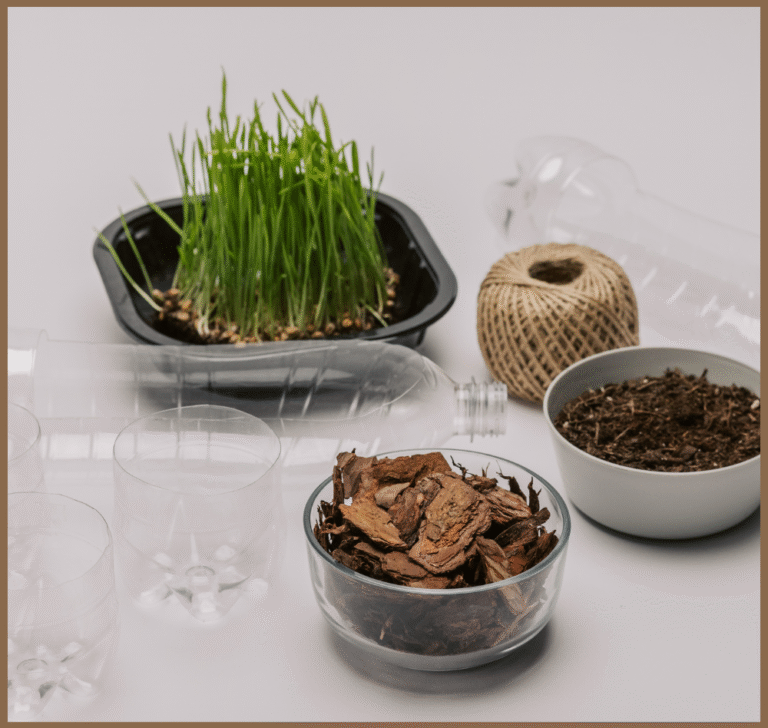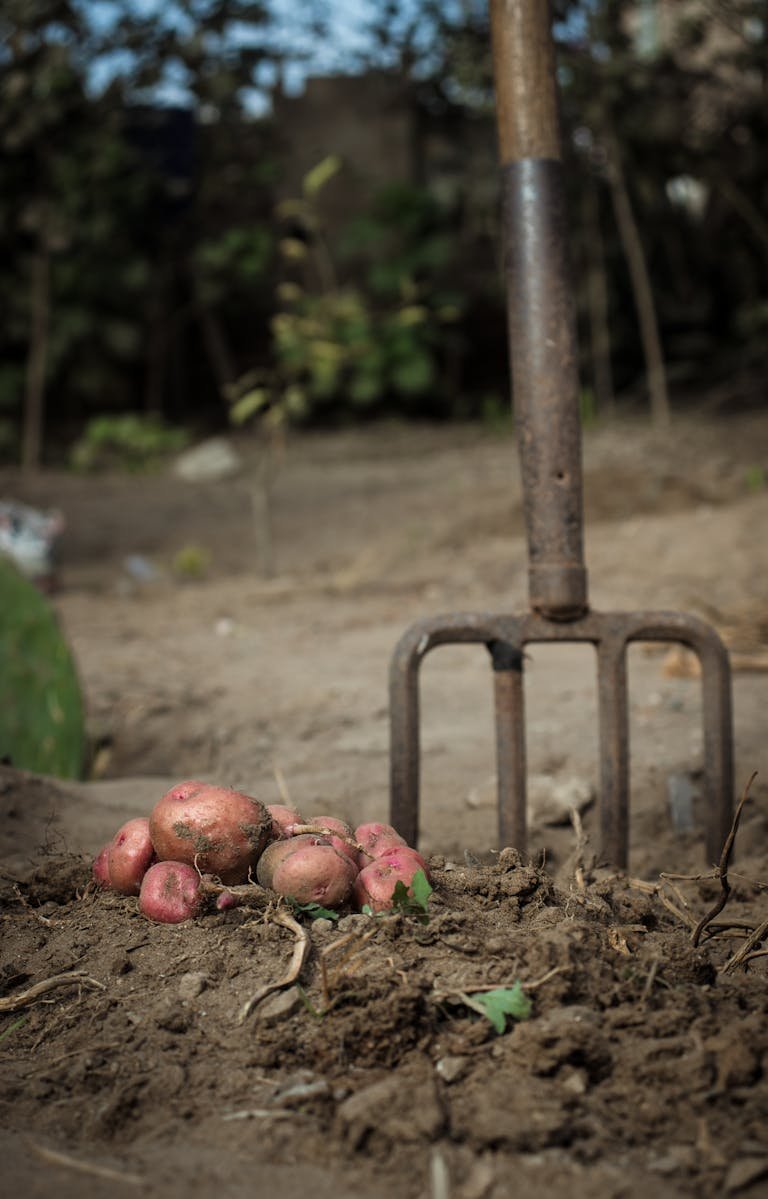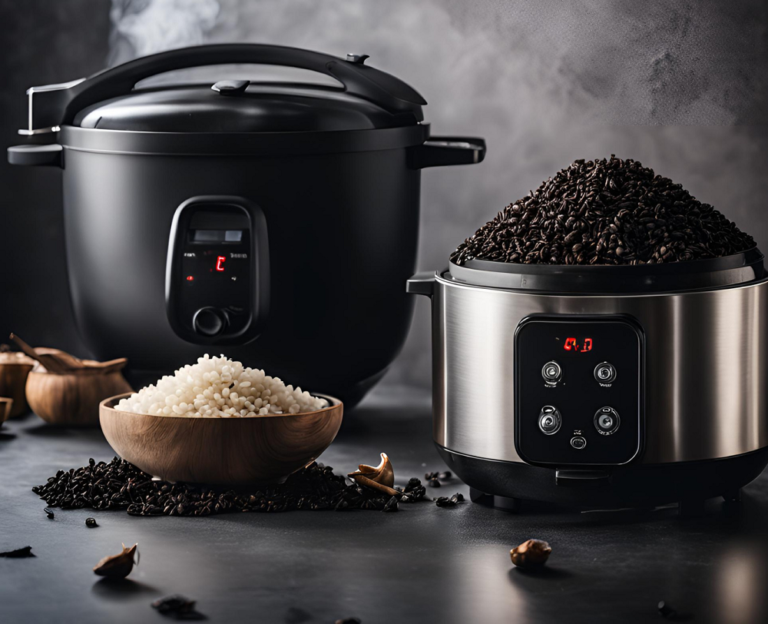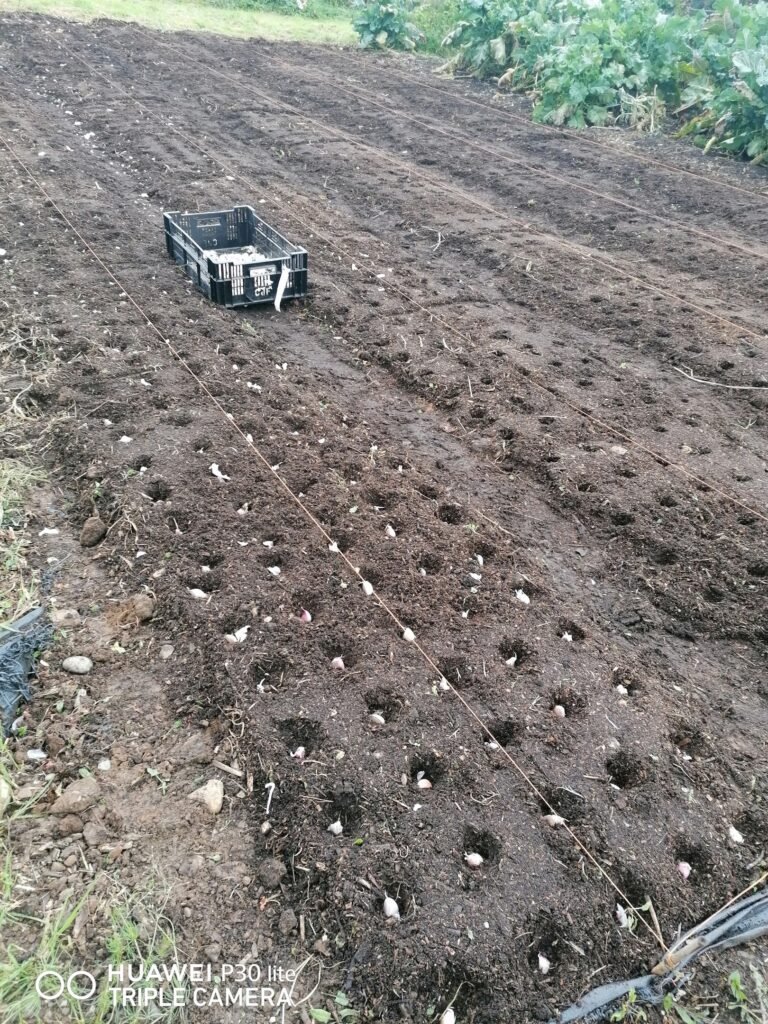
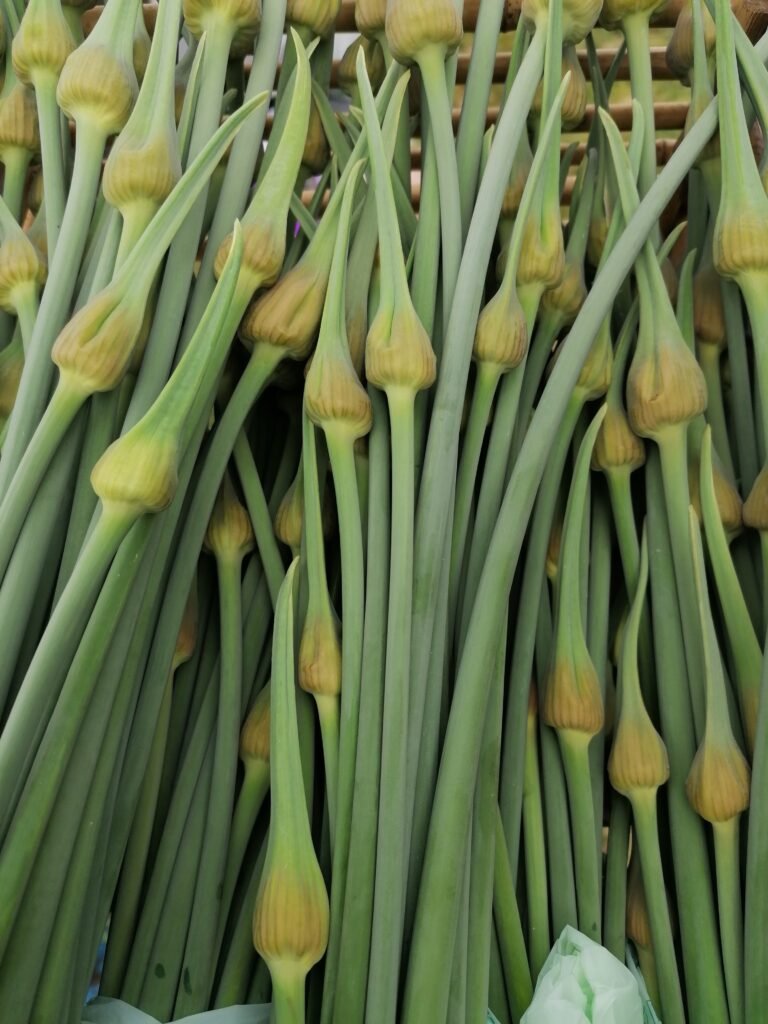
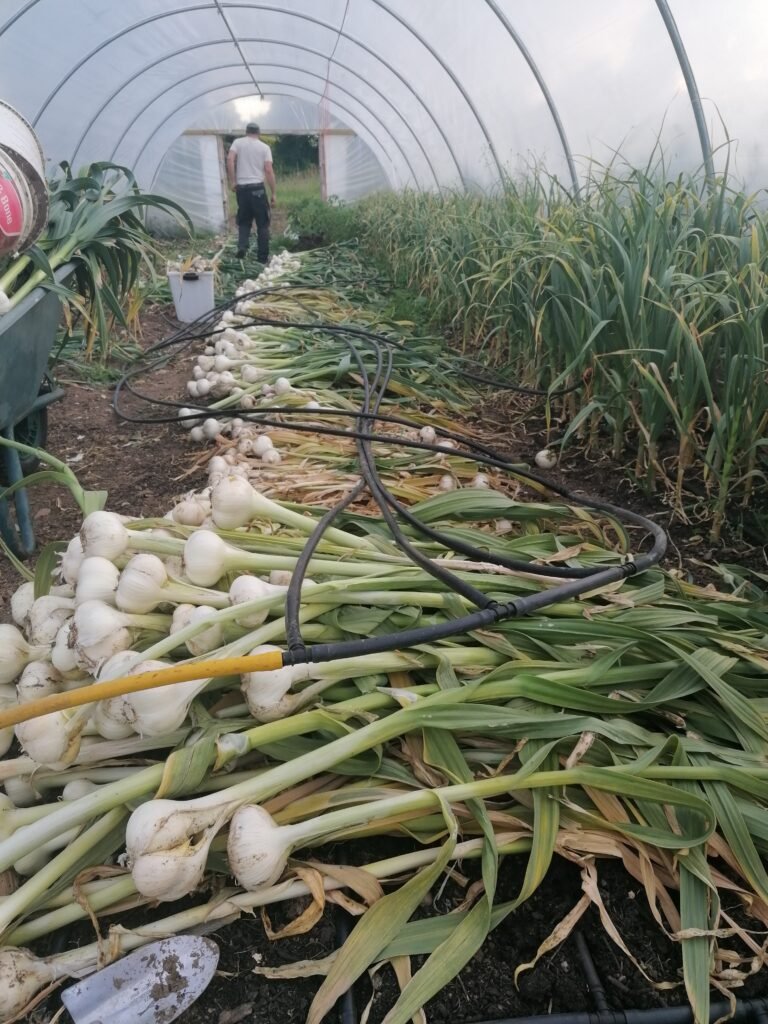
Garlic is one of Gar’s favourite crops to grow — hands down. And not just any garlic. Elephant garlic is the real showstopper in our garden. It doesn’t just give big bulbs. It also sends up the most glorious, thick, straight scapes you’ve ever seen. If you’re curious about how to grow garlic scapes, you’re in the right place.
Scapes are the curly flower stems that emerge from hardneck garlic varieties. They appear in early summer, full of life and flavour. If you snip them at just the right time, they’re tender and absolutely delicious. Even better? Removing scapes helps your garlic bulbs grow bigger below the soil. Win-win!
We’ve been growing garlic for years, and each season, we still get excited when those scapes start to twist. Gar lights up like a child on Christmas morning. Especially when his Elephant garlic sends up thick green spirals as long as his arm. You can read more about growing Elephant garlic here.
In this post, I’ll show you exactly how to grow garlic scapes — from planting the right type of garlic to harvesting those curly stems at the perfect moment. Whether you’re a seasoned gardener or just starting out, you’ll be amazed at how simple and rewarding this can be. Plus, I’ll share a few ways we love to use them in the kitchen. Let’s get growing.
What Are Garlic Scapes?
Garlic scapes are one of the garden’s best-kept secrets. They’re the curly green stems that rise from hardneck garlic varieties in late spring or early summer — elegant, twisted, and full of character. Unlike the bulbs growing beneath the soil, scapes are the plant’s flower stalk, reaching for the sky before blooming… if we let them. But here’s the magic: snipping them not only stops flowering but helps the bulb below grow bigger and tastier.
It’s easy to confuse scapes with garlic greens or even young shoots, but they’re quite different. Scapes are thicker, sturdier, and form a loop or spiral as they stretch. They snap like green beans when fresh and have a mild garlic flavour — somewhere between a chive and a clove. While the bulb is the garlic we all know, the scape is a seasonal delicacy that only shows up for a brief window.
And here’s the catch — you’ll only find them on hardneck garlic. Softneck varieties, the kind you often see braided, don’t produce scapes at all. That’s why we always grow a mix. Our absolute favorite has to be Elephant garlic though. The scapes it sends up are as thick as your thumb and twice as tasty.
In the kitchen, garlic scapes are gold. Tossed in pesto, grilled whole, or pickled for later — they’re versatile, easy to love, and a true gardener’s treat. In the garden, they’re a sign your garlic is thriving. A little twisty gift from the soil.
Best Garlic Varieties for Scapes
Not all garlic is created equal — especially when it comes to those lovely, looping scapes. If you’re dreaming of a basket full of fragrant green curls in early summer, you’ll want to plant hardneck varieties. These are the stars of the scape show. Among the best are Rocambole, with its rich flavour and easy-to-peel cloves; Purple Stripe, which brings vibrant colour and strong garlic punch; and Porcelain, known for producing thick scapes and sturdy, long-lasting bulbs. And of course, let’s not forget our personal favourite — Elephant garlic. Though technically a leek, it behaves like hardneck garlic in the garden, sending up impressively large, straight scapes that taste as good as they look. (Read more about Elephant garlic here).
Choosing the right variety depends a lot on your climate. If you’re in a colder region, hardneck types will thrive with a proper winter chill. But even in milder climates, you can get great results with a little planning and the right mulching. Look for locally grown seed garlic when possible — it’s better acclimated to your conditions and supports nearby growers too.
How to Grow Garlic for Scapes
Planting garlic for scapes is wonderfully simple once you know the basics. You don’t need a massive garden, just the right spot, good soil, and a bit of patience. Let’s walk through the essentials for growing your own scape-rich garlic patch. (Need the full story? Head over to our complete guide to growing garlic.)
When and where to plant garlic (fall vs spring)
For the best scapes, plant in autumn — around October in most temperate climates. Fall planting allows roots to establish before winter, leading to bigger bulbs and sturdier scapes. Spring planting is possible, but it often results in smaller plants.
Soil preparation and ideal conditions
Garlic loves loose, well-drained soil rich in organic matter. Add compost before planting, and aim for a pH between 6.0 and 7.0. Avoid soggy spots — garlic hates wet feet.
Spacing and depth for optimal scape production
Plant cloves 2 inches deep and space them about 6 inches apart. Rows should be 10–12 inches apart to allow airflow and room for scape formation.
Fertilizing for healthy, vigorous plants
Feed your garlic with a balanced organic fertilizer when shoots first emerge, then again in early spring. Nitrogen-rich compost teas or fish emulsion can really boost growth during the leafy stage.
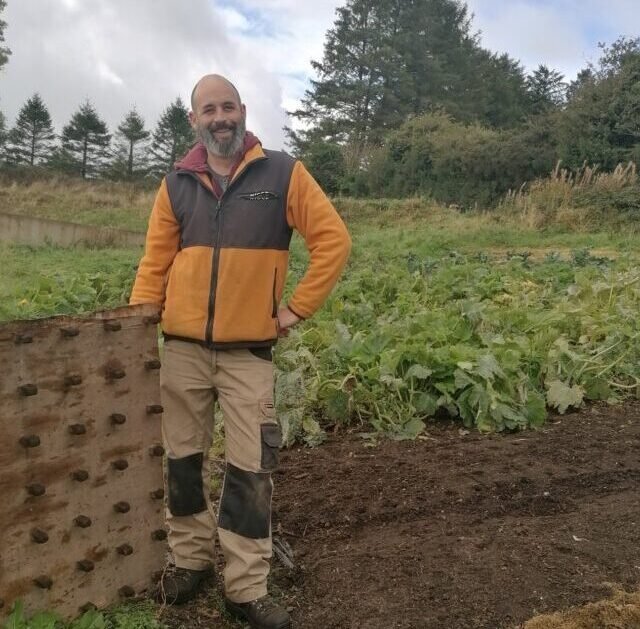

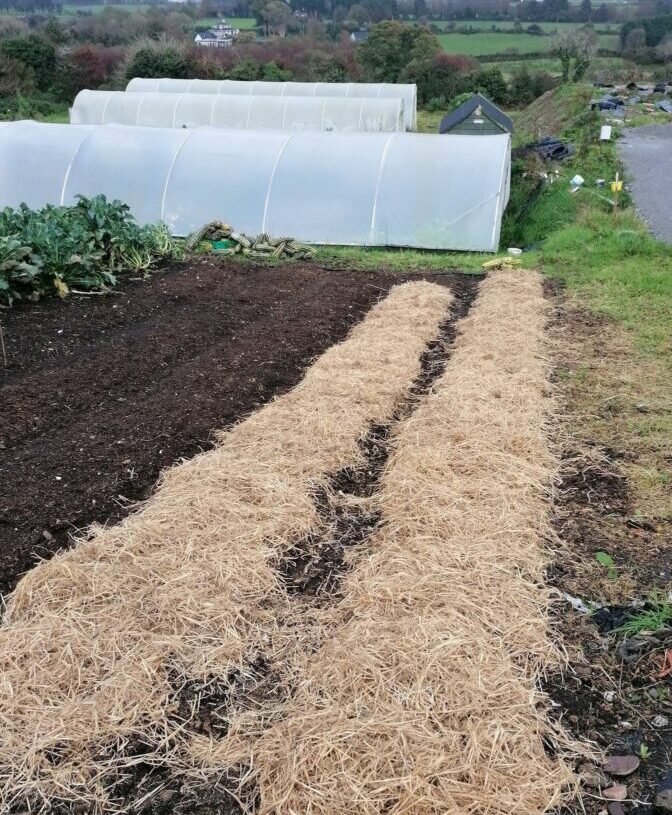
Garlic Scape Growing Stages
Garlic scapes don’t just pop up overnight — their appearance is part of a fascinating journey that begins months before. Understanding the stages of scape development will help you get the timing just right, both for harvest and for encouraging big, beautiful bulbs.
Timeline from planting to scape emergence
After planting in autumn, your garlic will rest through winter, quietly growing roots underground. By early spring, green shoots appear. Then, as the days warm and stretch into late spring or early summer, hardneck varieties begin sending up their curly flower stalks — the scapes. This usually happens about 6–8 weeks before bulb harvest.
Visual signs that scapes are forming
First, you’ll notice a central stalk emerging taller than the rest of the leaves. It looks different — round, sturdy, and upright. As it grows, it begins to curl. That’s your scape! Some varieties make dramatic spirals; others are more subtle. Either way, once you see the curl, you’re just days away from harvest time.
How garlic scape development impacts bulb growth
Here’s the twist: if left too long, scapes draw energy away from the bulb. That’s why many growers snip them off early — to redirect nutrients belowground. But don’t worry, you can still enjoy your scapes and grow great bulbs with a bit of timing. It’s all about balance.
When & How to Harvest Garlic Scapes
Timing is everything when it comes to harvesting garlic scapes. Wait too long, and they’ll get woody. Snip too early, and you might miss out on their full potential. Let’s walk through when and how to do it right — it’s easier than you might think!
Best time to harvest (curling stage)
The golden rule? Harvest garlic scapes when they form a full curl. This usually happens in early summer, around late May or June, depending on your climate. Once they start uncurling and standing upright, they’re past their prime — still edible, but tougher.
Step-by-step guide to snipping scapes
- Head out in the morning when the plants are crisp and hydrated.
- Gently follow the scape down to where it meets the leaves.
- Snip with clean, sharp pruners or scissors, taking care not to nick the leaves.
- That’s it! You’re ready to bring your curly harvest to the kitchen.
Tools you’ll need and safety tips
Use a sharp, clean pair of garden shears or herb snips — dirty or dull blades can spread disease and damage the stem. We love these precision hand pruners that make quick, tidy work of scape harvesting. When cutting, aim for a slight angle to help rainwater slide off easily. This small step reduces the risk of rot sneaking in later.
And don’t forget your hands — garlic scapes can be surprisingly slippery, especially when damp. A good pair of grippy garden gloves gives you better control and protects your skin during the snip. Bonus: they make you feel just a little more like a professional gardener.
How harvesting helps bulb development
Here’s the magic part: removing scapes encourages the plant to focus its energy on the bulb. That means bigger cloves come harvest time. It’s a small job with big rewards — one of the best gardening trades you’ll make all year.
How to Store Garlic Scapes
Storing garlic scapes is a breeze, and thankfully, they keep well — especially if you handle them right from the start. Whether you’ve got just a handful or a big basketful, here’s how to keep that fresh, garlicky goodness around a little longer.
Fridge storage tips for freshness
First, don’t wash them until you’re ready to use them. Moisture shortens their shelf life. Simply pop your scapes into a paper or mesh bag and store them in the vegetable drawer of your fridge. They’ll stay crisp and tender for up to 2–3 weeks.
Freezing garlic scapes: methods and best practices
Want to enjoy them well past scape season? Freezing is your friend. Start by chopping the scapes into small pieces. You can either freeze them raw in an airtight bag or blanch them for 30 seconds, then cool and dry before freezing. Either method works, but blanching can help preserve color and texture.
How long they last after harvest
Fresh scapes will keep in the fridge for a couple of weeks. Frozen scapes? They’ll last 6–12 months and are great for stir-fries, pestos, and soups. So don’t worry if you harvested more than you can eat — scapes are as generous in the freezer as they are in the garden.
How to Use Garlic Scapes in the Kitchen
Garlic scapes aren’t just for show — they’re kitchen gold. Milder than cloves but still packed with that signature garlicky bite, they’re a seasonal treat you’ll want to make the most of. Once you’ve harvested your stash, here’s how to let them shine.
Top 5 easy garlic scape recipes
You don’t need fancy ingredients to turn scapes into something special. Try:
- Garlic scape pesto – Blend with nuts, olive oil, and a little lemon.
- Garlic scape butter – Mash with softened butter and sea salt for a heavenly spread.
- Quick pickled scapes – Tangy, crunchy, and perfect for summer sandwiches.
- Scape stir-fry – Just chop and toss into any veggie or noodle dish.
- Garlic scape hummus – A fresh twist on a classic, with a hint of zing.
How to substitute for garlic cloves
If a recipe calls for garlic cloves, simply swap in finely chopped scapes. About one tablespoon of chopped scape equals one clove. It’s a subtle change but adds a fresh, green note that’s especially lovely in spring dishes.
Tips for preserving flavor and texture in cooking
Scapes cook quickly, so add them toward the end of sautéing to keep their crunch. If you’re blending them into sauces or dips, use them raw for the best flavor. And remember — freezing works, but once thawed, they’re best in cooked dishes where texture matters less.
Garlic scapes are fleeting, so enjoy every bite while you can!
Common Growing Problems & How to Avoid Them
Even the best garlic beds can run into trouble now and then. But don’t worry — most issues are easy to fix once you know what to look for.
Pests and diseases that affect garlic
Keep an eye out for aphids, onion maggots, and fungal diseases like white rot or rust. Crop rotation helps a lot, as does well-drained soil and clean tools. If pests do appear, neem oil or a strong blast of water can often sort them out before they spread.
Signs of overwatering or poor soil
Yellowing leaves, mushy bulbs, or slow growth often point to waterlogged soil. Garlic likes moisture, but not soggy feet. Add sand or compost to improve drainage and avoid watering if rain is on the way. A raised bed can work wonders.
What to do if your garlic doesn’t produce scapes
No scapes? You might be growing softneck garlic, which doesn’t produce them. For scapes, always choose hardneck varieties. If you planted hardneck but still no scapes appear, check planting depth, spacing, and sunlight. Garlic needs a cold spell to trigger scape production, so autumn planting is usually best.
With a little observation and some seasonal tweaks, your garlic patch can bounce back from almost anything.
Conclusion
If you’re anything like us, once you’ve grown garlic scapes, you’ll wonder why you ever threw them in the compost. They’re one of those bonus harvests that feel like a secret only gardeners know — tender, tasty, and surprisingly versatile. And while all hardneck varieties produce scapes, we’ll admit we have a soft spot for one in particular.
Elephant garlic, hands down, is our top pick. Its scapes are big, bold, and straight as a wand. They don’t do the little curlycue dance like Rocambole or Purple Stripe. Instead, they shoot up proud and tall, making them easier to spot, easier to chop, and frankly, a joy to cook with. We grow a lot of garlic here, but elephant garlic gets its own corner of the tunnel — partly because Gar is still just a little bit smug about those massive bulbs he dug up last year.
Of course, growing great scapes starts with healthy garlic, and healthy garlic starts with good planting, soil, and timing. But once you’ve got that right, the rest flows. From pesto to pickles, stir-fries to soup, garlic scapes bring a mild, buttery garlic flavour that’s just different enough to keep things interesting.
So whether you’re growing in raised beds or tucked-away kitchen plots, don’t miss the scapes. They’re more than just a prelude to the bulb — they’re a crop in their own right. And if you’ve never tried elephant garlic? You can grab our homegrown seed cloves and quorms in the shop here — they’re a gentle giant worth making space for.




